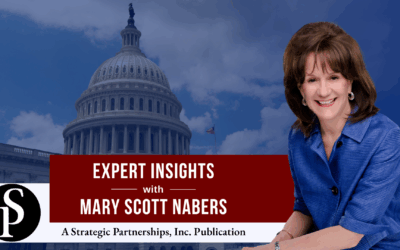
To say that the lives of public officials are stressed now is a huge understatement. Governors are complaining about actions taken by local officials, and the federal government is threatening to send in the military. Public officials are being sued over COVID-19 restrictions, and testing is still not readily available everywhere. At the moment, there is little relief in sight, and the expenses mount.
When the immediate protest crisis is over, COVID-19 will still be a looming issue. Confrontations occurring today put more economic stress on local governments and result in more job losses. Staff reductions at governmental entities are likely to occur when funding is impacted even more.
It is truly an unforgiving time, and immediate action is required. Leadership is needed to guide the country back to some sort of normalcy.
In times like these, every part of America seeks leadership, especially at the local levels of government. Fortunately, there’s evidence that visionary leaders are alive and well.
Numerous local officials are planning to move forward and tackle issues that were of high priority before COVID-19. These are the individuals who will lead the country back to a safer place, but they need help. They will require assistance from investment partners, planning experts, industry leaders, nonprofit organizations, and citizen volunteers.
In some parts of the country, leaders have already formed collaborative initiatives such as public-private partnerships (P3s) to launch projects that will create jobs and stimulate the economy. The more restrictive public budgets become, the greater the demand will be for collaborative alliances. Here are a few examples of upcoming projects that have been announced.
The Yuma City Council in Arizona recently approved a $51.4 million budget increase for the city’s Capital Improvement Program (CIP). The city plans for 45 percent of the costs to be covered through grants and private sector investors. The 2021 CIP includes 54 projects, with the biggest chunk, $20.3 million, allocated for the Yuma Crossing National Heritage Area. In April, the city announced it would hire a design-build team for the project. No launch date has been set, but a private-sector partner will be selected soon. The city also has announced a regional fiber optic infrastructure project that will be a public-private partnership.
The city of Franklin, Texas also is prioritizing a capital improvement plan. Projects include improvements to Carlisle Lane, the creation of a greenway from Pinkerton Park to the Franklin Road Bridge, improvements to the intersection of Peytonsville Road and Pratt Lane, and several restoration projects. To keep these projects from being moved into a future fiscal year, the city will consider private investment, grants funding, and working with developers.
Officials in Maui’s Hawaii County will solicit proposals for a P3 for several critical projects that will provide regulatory compliance with the Clean Water Act. The Kealakehe Wastewater Treatment Plant requires approximately $75 million in upgrades.
The county of Albemarle, New York revised its 2021 recommended budget because more funding is needed. County officials also will rely on private-sector investment from selected partners. Plans have been announced to complete a project called the Southwood Redevelopment. The expanded budget has an allocation of $1 million for economic development funding and costs related to P3s.
The University of California (UC) has a 2019-2025 Capital Finance Plan (CFP) that outlines projects with costs of approximately $52 billion for campus and medical center needs. The CFP includes various types of capital projects, the acquisition of property, and the endorsement of P3 engagements. The Irvine campus has a long history of partnering with third-party groups to advance its strategic goals, so the inclusion of P3s is not surprising. The CFP includes East Campus Apartments Phase 4B with approximately 1,000 additional beds (FY 2019-2020) and East Campus Apartments Phase 5 (FY 2024-2025) with up to 2,700 beds. Other P3 projects identified in the CFP include an on-campus hotel (FY 2021-2022) and redevelopment of a faculty/staff rental apartment complex.
Since the passage of the Public-Private Partnership for Educational Facilities and Infrastructure Act (PPEA) in 2002, Fairfax County, Virginia has been engaged in significant capital projects. Under its 2021-2025 Capital Improvement Program, the county has approved more than $1 million to support a Massey Complex planning effort to evaluate potential land use alternatives for the future of the entire Massey Complex. The master planning effort will include assessment of priority uses for the site, including future criminal justice, public safety, and human services’ needs. In addition, the Courts and Community Services Board needs a new Court Diversion First Center, and that also is under consideration. Disposition of other county-owned real estate assets near the Massey location also may be evaluated for opportunities, and the possibility of redevelopment with partners will be assessed.
Upcoming opportunities to contract and collaborate with governmental entities may be found in almost every state. When the projects are launched, jobs will be created, local economies will be stimulated, and life will be more positive. It’s obvious that the sun will come out again soon in America.
SPI’s e-newsletters are an excellent source of government contracting opportunities. Sign up today to ensure you never miss out!






